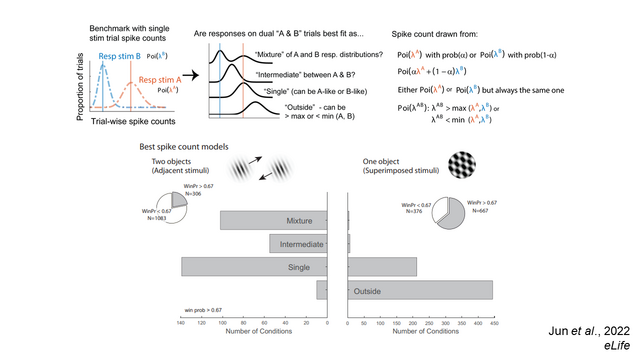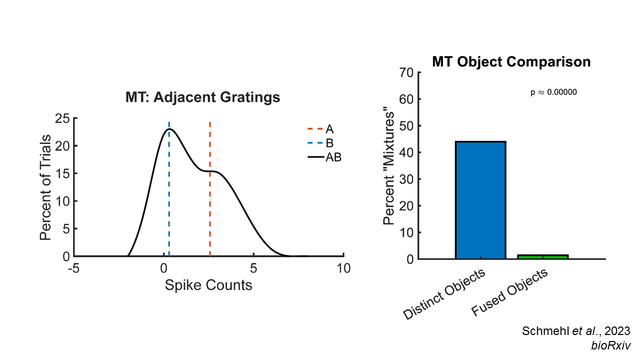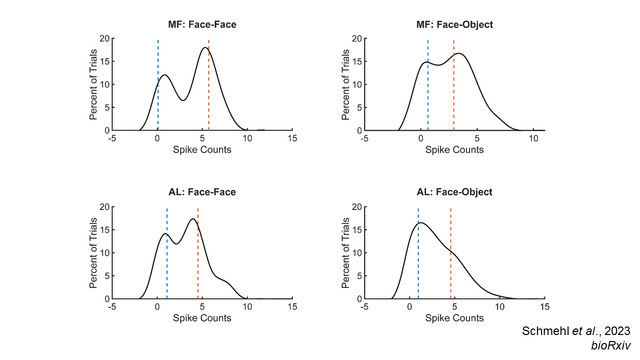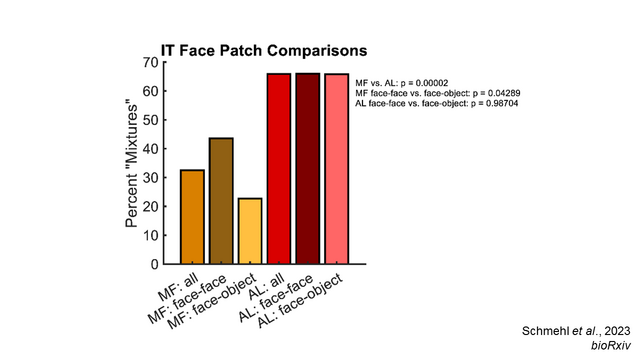Recent searches
Search options
New preprint with @jmgrohneuro and more! Neurons in several visual areas show fluctuating responses in the presence of multiple objects. An important general finding with potential connections to object formation!
https://doi.org/10.1101/2023.07.19.549668
Thread:
1/10
In a previous eLife paper (https://doi.org/10.7554/eLife.76452), we showed that neurons in V1 and V4 fluctuate (across trials) between responding to each of two gratings when both were presented adjacently. But when two gratings overlapped to form a plaid, neurons in V1 did not fluctuate.
2/10
Here (https://doi.org/10.1101/2023.07.19.549668) we expand to new brain areas and stimulus types. We wondered:
1. Are fluctuations widespread in the visual pathway?
2. Do they occur only when two stimuli are distinct?
3. Do they depend on the type of stimulus a brain area is specialized for?
3/10
We explored these questions in several datasets recorded by the labs of Marlene Cohen, Winrich Freiwald, and Stefan Treue, using a custom analysis method we previously published (https://doi.org/10.1038/s41467-018-05121-8).
4/10
We studied the relationship between the responses to two stimuli together (AB) vs. the two stimuli individually (A or B), looking for AB responses that fluctuated between A and B ("mixtures").
5/10
First, we found evidence for fluctuating activity in visual area MT. Like in V1, neurons in MT only fluctuate when stimuli form distinct objects (two gratings) and not when they fuse into one object (gratings overlaid to form a plaid).
6/10
Second, we expanded our study to the face patch system to determine whether these fluctuations depend on the type of stimulus a brain area is specialized for. We found that both face-face and face-object pairs elicited fluctuating activity in face patches MF and AL.
7/10
However, fluctuations were more prevalent in AL, which is thought to be "later" in the face patch hierarchy than MF - lending support to the idea that fluctuations may vary by stage of visual processing.
8/10
Overall, our work expands the range of brain areas and stimulus conditions in which we have observed fluctuating activity, identifying a potential neural correlate of information preservation and object formation.
9/10
Thanks to all the coauthors for their collaboration on this work! It's been fun to work on this important finding alongside my work on these fluctuations in audiovisual contexts!
https://doi.org/10.1101/2023.07.19.549668
10/10






